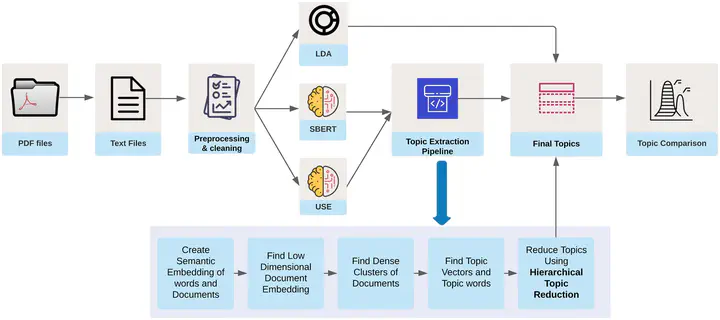Artificial intelligence for topic modelling in Hindu philosophy: Mapping themes between the Upanishads and the Bhagavad Gita
 Image credit: Authors
Image credit: Authors
Abstract
The Upanishads are known as one of the oldest philosophical texts in the world that form the foundation of Hindu philosophy. The Bhagavad Gita is the core text of Hindu philosophy and is known as a text that summarises the key philosophies of the Upanishads with a major focus on the philosophy of karma. These texts have been translated into many languages and there exist studies about themes and topics that are prominent; however, there is not much done using language models which are powered by deep learning. In this paper, we use advanced language models such as BERT to provide topic modelling of the Upanishads and the Bhagavad Gita. We then map those topics of the Bhagavad Gita and the Upanishads since it is well known that Bhagavad Gita summarizes the key messages in the Upanishads. We also analyse the distinct and overlapping topics amongst the texts and visualise the link of selected texts of the Upanishads with the Bhagavad Gita. Our results show very high similarity between the topics of these two texts with the mean cosine similarity of 73%. We find that out of the fourteen topics extracted from the Bhagavad Gita, nine of them have a cosine similarity of more than 70% with the topics of the Upanishads. We also find that topics generated by the BERT-based models show very high coherence when compared to the conventional models. Our best-performing model gives a coherence score of 73% on the Bhagavad Gita and 69% on the Upanishads. The visualization of the low-dimensional embeddings of these texts shows very clear overlapping themes among their topics adding another level of validation to our results.
Supplementary notes can be added here, including code, math, and images.